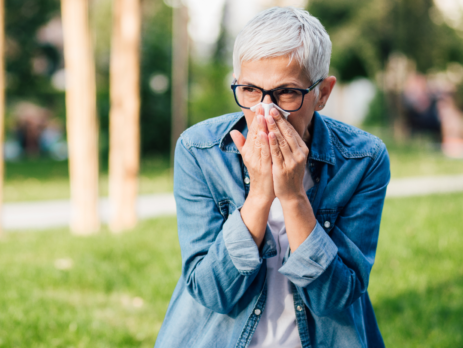Navigating Allergies in Late Summer: A Guide for Caregivers
Late summer brings warm weather, outdoor activities, and unfortunately, a rise in allergies. As a caregiver, it’s crucial to be well-informed about common late summer allergies and how you can assist your clients in managing their symptoms effectively. In this guide, we’ll explore the allergies that tend to peak during this season and provide practical tips for creating an allergy-friendly home environment.
Common Late Summer Allergies
Late summer allergies are often triggered by different types of pollen and mold spores that are prevalent during this time. Some of the most common allergens include:
- Ragweed Pollen: Ragweed is a major late summer allergen, releasing pollen into the air that can cause sneezing, runny nose, itchy eyes, and even exacerbate asthma symptoms.
- Mold Spores: The warm and humid conditions of late summer are ideal for mold growth. Mold spores can be found both indoors and outdoors and can trigger allergic reactions.
- Grass Pollen: Certain types of grasses release pollen during late summer, contributing to allergic symptoms for those sensitive to them.
As a caregiver, you can help your patients manage their allergies and create a comfortable environment. Here are some tips to consider:
- Medication Management: Ensure that your clients are taking their prescribed allergy medications as directed. Over-the-counter antihistamines and decongestants can help alleviate symptoms, but prescription medications may be necessary for more severe cases.
- Regular Cleaning: Regularly clean the living space to reduce allergens. Use a vacuum cleaner with a HEPA filter, damp mop floors, and dust surfaces. Regular cleaning helps minimize the accumulation of pollen and mold spores indoors.
- Air Quality: Consider using air purifiers with HEPA filters to help remove allergens from the air. Also, remind clients to keep windows closed during high pollen days to prevent outdoor allergens from entering the home.
- Allergy-Friendly Bedding: Encourage the use of hypoallergenic pillowcases and mattress covers to create a barrier against allergens. Wash bedding frequently in hot water to eliminate dust mites and allergens.
- Avoid Outdoor Exposure: On days when pollen counts are high, suggest that your clients limit outdoor activities, especially during peak pollen times, which are typically early morning and late afternoon.
- Monitor Weather and Pollen Forecasts: Stay informed about local pollen counts and weather forecasts. This will help you plan activities and take precautions on days when allergen levels are elevated.
- Encourage Hygiene Practices: Encourage clients to shower and change clothes after spending time outdoors to remove allergens from their skin and hair.
- Consult Healthcare Professionals: If clients’ allergy symptoms are severe or not well-controlled, advise them to consult with their healthcare providers for personalized recommendations.
Remember, each person’s allergies are unique, so tailoring your approach to their specific needs and preferences will yield the best results. As a caring and knowledgeable caregiver, you have the power to make a positive impact on your clients’ well-being during the allergy-prone late summer months.

